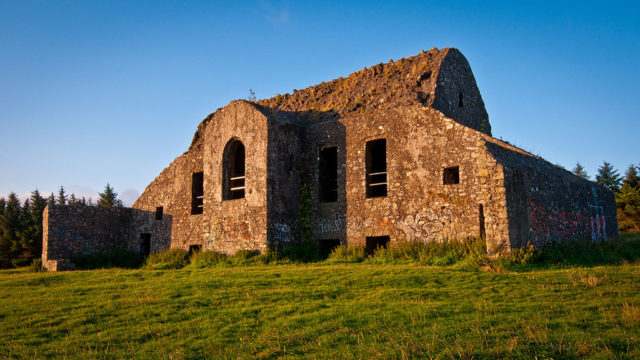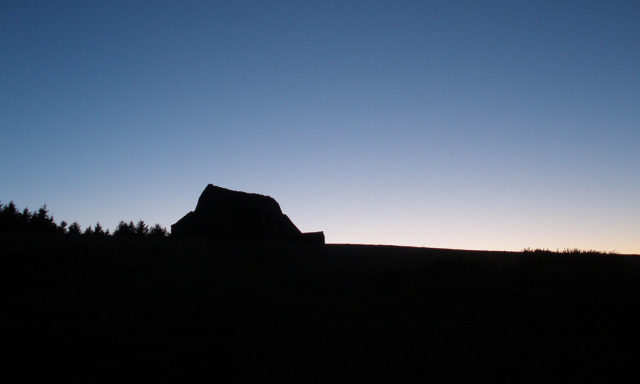Dublin’s Hellfire Club is a place shrouded in mystery and myth, but some secrets are being revealed after an important finding was made at the site.
The club’s infamy comes from the fact that it was built using stones from ancient tombs. This was practically grave robbing.
Archaeologists who started excavating the ground last month have found artwork that they believe to be 5,000 years old. The stone carving is so faint that it’s almost imperceptible to the naked eye. The team admitted that they almost missed it. They saw the design when a beam of sunlight shone on the rock a few weeks after they had removed it during the dig.

The leading archaeologist, Neil Jackman, stated to his team that they didn’t originally notice anything particularly unusual about the stone. He also stated that earlier in the morning on Wednesday, October 19th, the low autumnal sun had hit the stone at the right angle and showed a previously unnoticed long curving line. As they were looking at the line, the light changed and revealed that it was cut over the top of two faint concentric circles, one inside the other. This is a decoration that appears in megalithic art, and samples are located at some of the most famous passage tombs in the country.
This finding caused great excitement for the team. They immediately sent pictures of the carvings to megalithic art specialists at the University College Dublin (UCD) for them to be examined. Sadly, the archaeologists weren’t the first visitors to miss the significance of the stone.

The beautiful spot is high inside the mountains of Dublin and has been the scene of countless barbecues, bonfires, and hellfire over the years. The Hellfire Club started as an 18th-century hunting lodge, but it has passed through folklore as a temple for Dublin debauchery.
The lodge was constructed around 1725 for the powerful politician William Conolly, the Speaker of the Irish Parliament. He no doubt cut his construction costs by helping himself to the remains of two close by ancient passage tombs.

Karma struck with fury. Soon after the building was completed Conolly died. His widow then leased the lodge to a Dublin aristocrat, the Earl of Rosse.
The Earl of Rosse and his young gang of wealthy misfits developed a not-so-great reputation due to their destructive behavior. There was no place for this type of behavior in the proper Georgian Dublin.
Rosse had a reputation of hosting his gatherings in the nude. His gang was known by different names like the Hellfire Club, Young Bucks of Dublin, and The Blasters.
It’s not documented if the clubbers knew that their parties had a backdrop of megalithic art.
The carved stone was badly damaged by flames, and Mr. Jackman stated that many fires had been lit upon it, which fractured it into four large fragments when they lifted it from the trench.

Even though the piece is broken, the archaeologists are still viewing the stone as highly significant and have donated it to the National Museum of Ireland to have the further examination.
We have another story for you: Ancient tomb unveils Pacific islanders fabricated new type of society
Mr. Jackman added that this exciting finding is helping to reinforce the importance of the tomb that’s behind the Hellfire Club. It’s giving us a tantalizing glimpse into what the original tomb might have looked like before its destruction during the 18th and 19th centuries.
